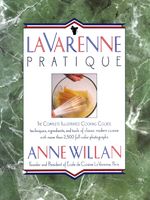Advertisement
Brown Sauces
Appears in
By Anne Willan
Published 1989
Espagnole, the original brown sauce, was once the glory of the French kitchen. The name dates from the eighteenth century, when the finest ham—an essential ingredient of espagnole—was said to come from Spain. Two or three days were required to make the sauce. First the roux was slowly browned to develop the flavor, then a rich brown stock—the preparation of which was a day’s work in itself—was added, together with pieces of veal, ham, a stewing fowl or a game bird.
Today, most cooks have abandoned the roux thickening for basic brown sauce in favor of arrowroot or potato starch, both of which give a lighter sauce and bypass the long simmering required for traditional espagnole. However, the classic espagnole sauce, made by the traditional method, is still used to provide a more interesting alternative to basic brown sauce. The darker the stock used, the richer the flavor of the brown sauce will be. Veal stock is appropriate for poultry and white meats, while a dark veal or beef stock is more suitable for lamb, beef and game.

